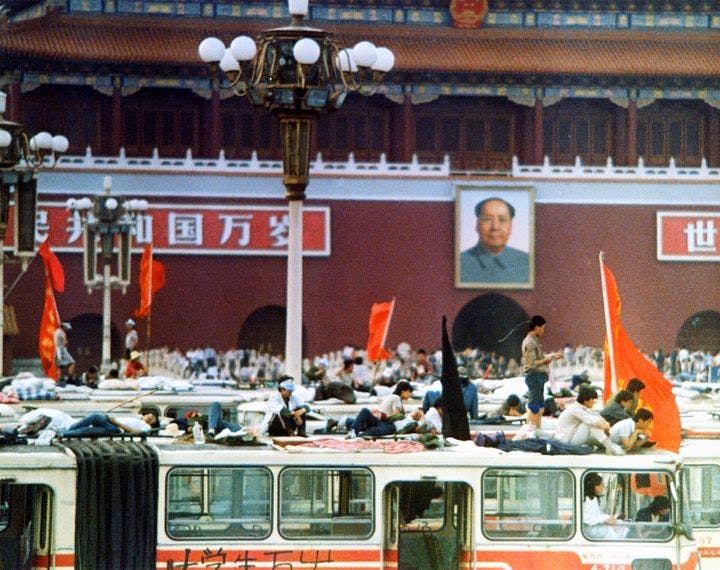Tiananmen Square at 25
– Terril Yue Jones
Memories of Tiananmen Square in 1989, as told (and photographed) by a journalist who was there.
A day after the People’s Liberation Army stormed into central Beijing on June 4, 1989, and retook Tiananmen Square from protesters who had occupied the vast plaza for much of the previous six weeks, I stood outside the Beijing Hotel just east of the Square. A frightening pall had settled over Beijing, broken almost hourly by cacophonous volleys from soldiers’ automatic weapons, often aimed at the crowds of onlookers.
People would scatter, but some were hit and quickly carted away by flatbed tricycles. Inevitably, the pressing internal Chinese drive of kan renao, or checking out what is going on, would overcome them and they would return to gawk at the soldiers and hardware that had rolled through their city.
At one point, tank engines could be heard approaching from the Square. Gunfire emanated again, and people fled away from the boulevard. I saw people running and tanks approaching. I lifted my camera, took one photo and scampered away myself.
Only months later did I discover that I had captured an alternate view of one of the most dramatic moments of those weeks: the man with the shopping bags who stopped a line of tanks, which many saw as standing up to dictatorial rule. He came to be called the “Tank Man.”
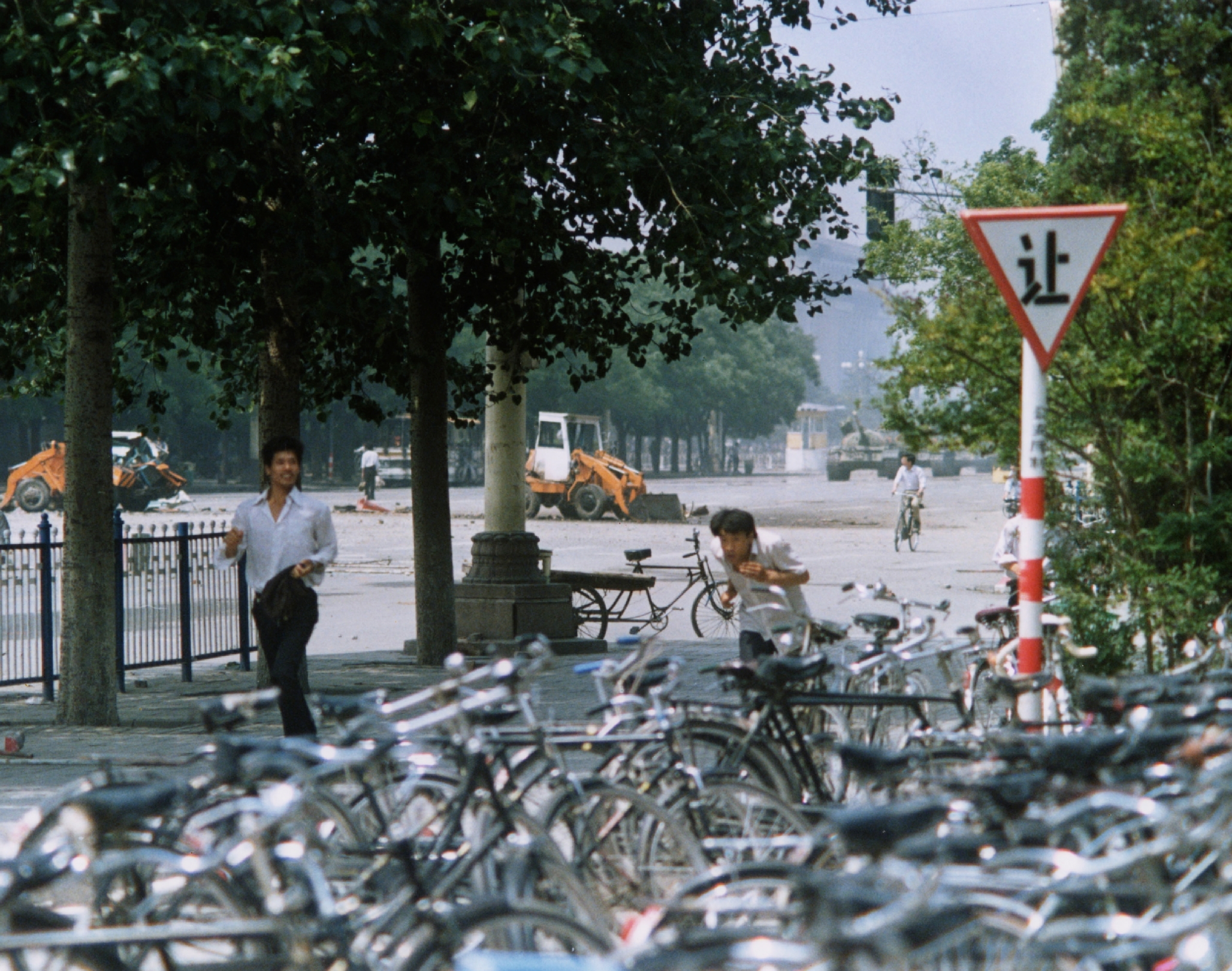
It was a chaotic but exhilarating time. While my photos are somewhat faded, my memories are not. As a journalist covering the Beijing protests and ultimate PLA response, it was a heady time of pumping adrenaline that was a reporter’s dream: a monumental event unfolding before our eyes, spectacular backdrops and complete uncertainty as to what would happen next.

Scholars and the public in the West remember 1989 as a tumultuous year, full of staggeringly significant turning points, transfers of power and ends of eras. But look up the year 1989 in the online encyclopedia of Baidu.com, China’s largest search engine, and one will find brief entries about “turmoil” instigated by students while loyal Chinese troops “put down the rebellion.”
To me, my photos form a visual diary of those days — a China that is a far cry from the country where I lived from 2010-2013. China in 1989 was closer to undeveloped China in 1976, my first visit to the country, than it was to China in 2000, although some major city landmarks such as the Jingguang Tower, and China World Trade Center (with its twin-tower luxury apartments), were nearing completion when I arrived in May 1989.
I was based in Tokyo for The Associated Press, and had had a number of assignments in China to fill in for vacationing staff. In the 1980s AP had only two correspondents in all China, well outnumbered by Reuters, which had six. (During my recent three-year assignment with Reuters in Beijing, we had about 100 reporters, including news translators, and around 25 foreign journalists at any time, by far the largest overseas news operation in China.)
Many journalists had arrived in Beijing in May for the historic visit by Soviet leader Mikhail Gorbachev. Scheduled to start on May 15, the trip was heralded as an end to the Sino-Soviet version of a Cold War: 30 years of estrangement after strong ideological and economic ties in the 1950s. (It was also closely watched by Washington, wary of détente between the world’s two biggest communist powers.)
But Gorbachev’s visit came after a restless spring in Beijing, with the death in April 1989 of respected former Communist Party Secretary Hu Yaobang, seen as a reformer who was popular on college campuses. Students from Beijing’s universities marched to Tiananmen Square that April, erected huge mourning wreaths on the Monument to Heroes, and chanted that the wrong man had died — criticism of China’s doctrinaire inner-circle leaders.
A caustic April 26 editorial in the People’s Daily newspaper lambasting the students’ response to Hu’s death set off another round of marches, as did the 70th anniversary of the May Fourth Movement, an anti-Imperialist and political campaign whose themes included science and democracy. Each of these 1989 events created a flurry of demonstrations that would peter out when students returned to their campuses.
With Gorbachev — and hundreds of members of the world media — descending on Beijing, students shrewdly stole the spotlight. At the time I was based in Japan, assigned to the Tokyo bureau of the AP. Because I spoke Chinese, I had had numerous assignments in China previously; I arrived on May 12 to help with Sino-Soviet coverage. There was already a heady sense of the historic nature of Gorbachev’s meetings with Chinese leaders — especially Deng Xiaoping, who no longer had a government title, but was recognized as the power behind the policy. Journalistically, he was referred to as “senior leader” in our news articles.
On May 13, I was in the AP bureau when a colleague came in. “Now we’ve got students on a hunger strike at Tiananmen,” he said, rolling his eyes. It was two days before Gorbachev was to arrive, and to us, it was a headache we would have to track to include in our stories.


By May 15, the crowds on the Square had swelled so large that the government could not put on a welcoming ceremony for the Soviet leader there as planned, and instead held it at Beijing’s airport. It was a huge humiliation for China’s government and for the Communist Party, foiled from properly hosting its Soviet counterpart and its charismatic leader who was hailed the world over for his “glasnost” and “perestroika” policies of openness and restructuring. At the AP, we decided we would have to have staff around the clock at Tiananmen, which we began calling T-Square or T2 (as in ‘T-Squared’).

It was a shock to see the students overflowing Tiananmen Square at will, and galvanizing an estimated million-plus (and probably more) citizens to the streets in support of their calls for increased freedoms, political reforms, and an end to corruption.
City folk and workers joined the protests with gusto, going on strike from factories to parade up and down Changan Boulevard in sedans, taxis, trucks and buses, bristling with banners like Peking opera military commanders.
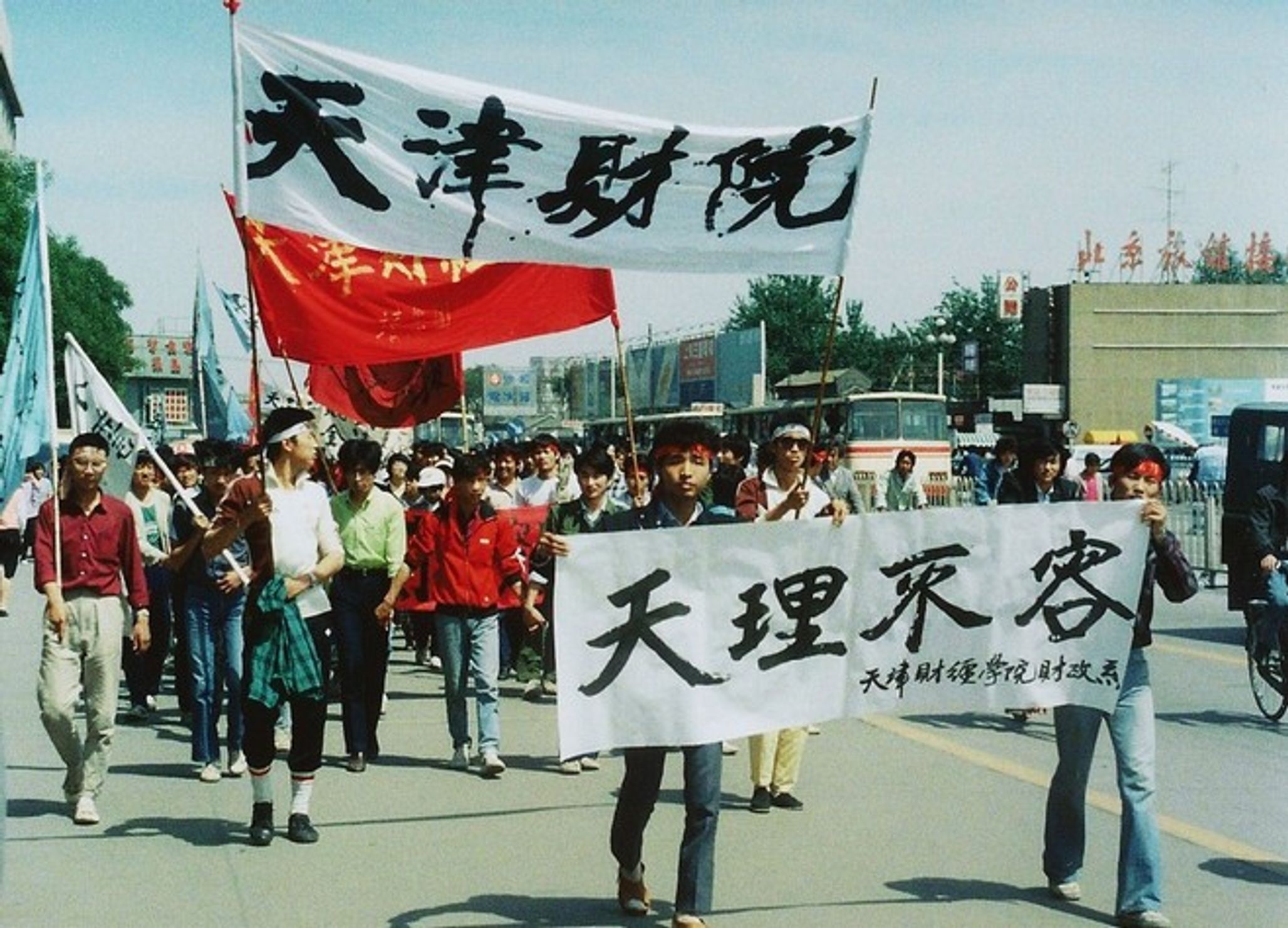
Visit our ‘Viewfinder’ to see more of Terril Yue Jones’s photos of 1989 in China →


The chants and signs were searing and unprecedented against sitting Chinese leaders — demanding that (Premier) “Li Peng, Step Down,” “Stand with the Students,” “Life or Death,” “Intolerable,” and even, in English, “Liberty or Death.” One poster showed a pensive former Premier Zhou Enlai, whose 1976 death sparked an outpouring of spontaneous mourning on Tiananmen Square; the sign’s handwritten words read, “You let me down, Li Peng,” with Zhou scolding Li from the afterlife.
The showing was quickly labeled a democracy movement by western media, and to some extent that was true. Students spoke of bringing minzhu (democracy) to China, and trumpeted the idea on painted banners (some, including a group from the China Academy of Fine Arts, even had T-shirts printed up). But the students were not just calling for one-man, one-vote politics. They called for intellectual and social reforms such as a freer press; recanting by the government of campaigns against “spiritual pollution” and “bourgeois liberalism;” more funding for education and the recognition that their movement was patriotic and not counter-revolutionary; and, presciently, the disclosure of wealth and assets of leaders and their families to avoid corruption. “Down with nepotism, fight corruption,” went a song sung by students at Tiananmen to the tune of “Are You Sleeping?” “We ask for democracy, we ask for freedom. Forward!”
Workers, teachers and other citizens generally agitated for increased social and economic rights: better wages, the ability to choose jobs and buy homes, the flexibility to travel … the ability to make money and have a better life.
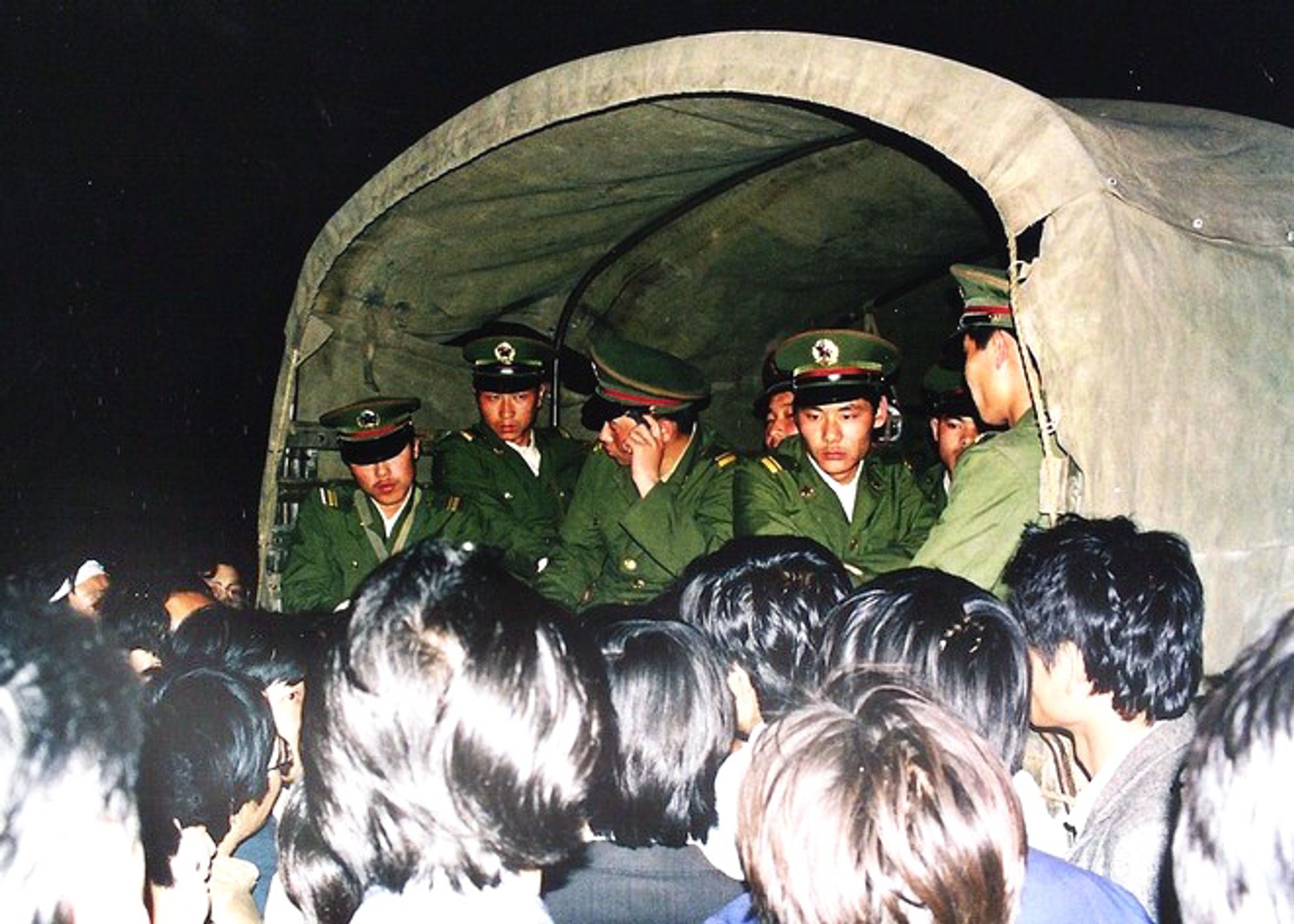
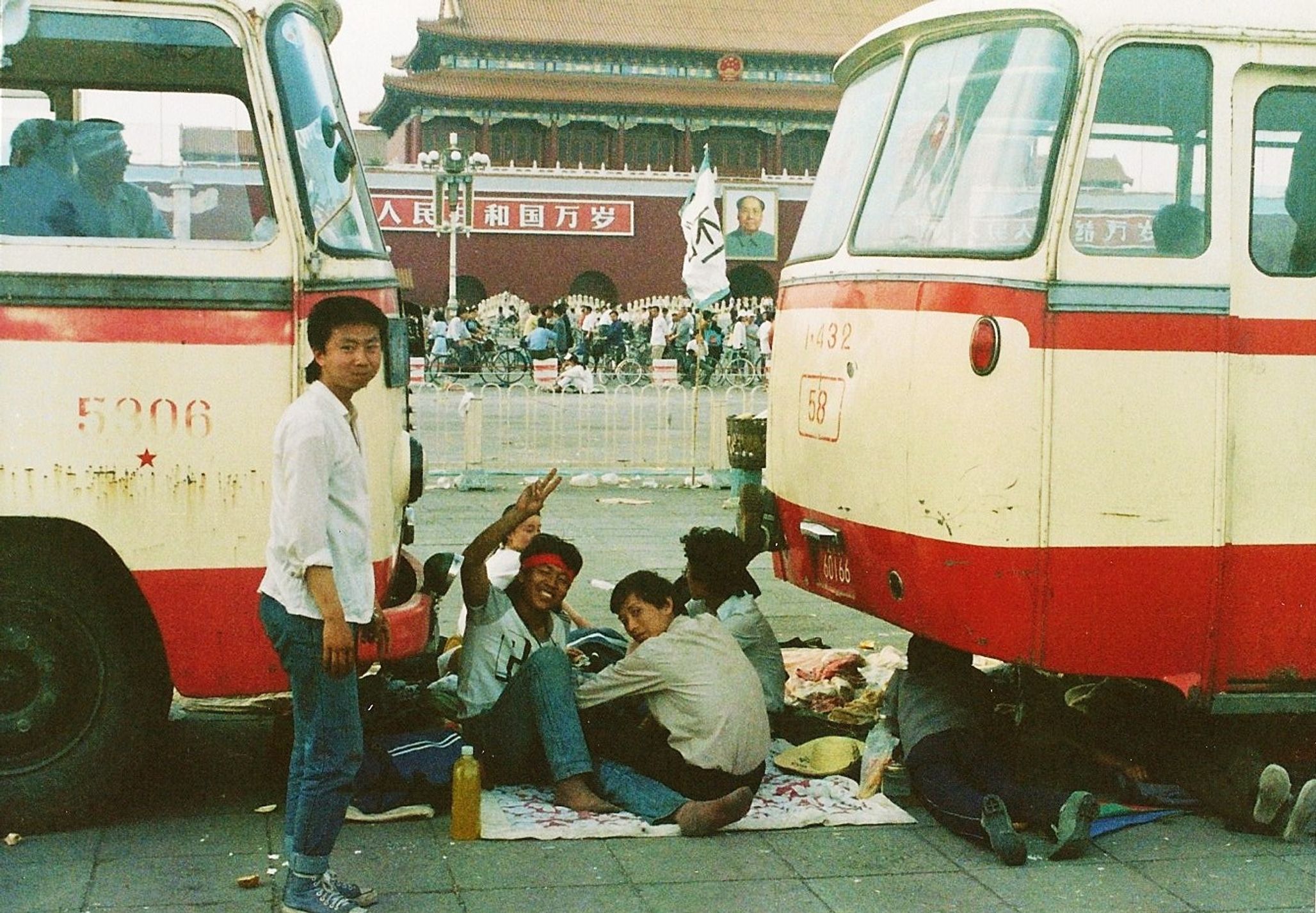
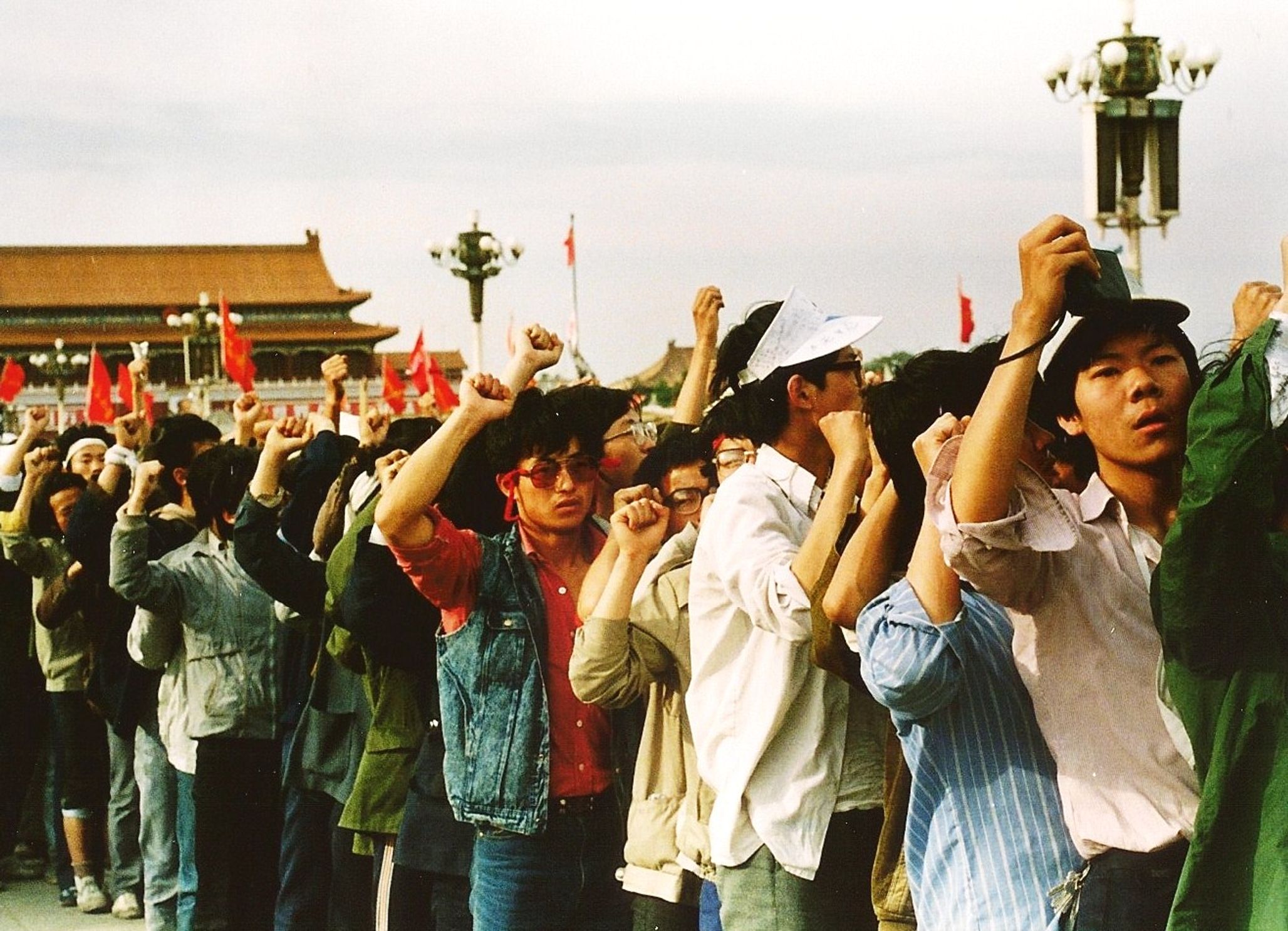
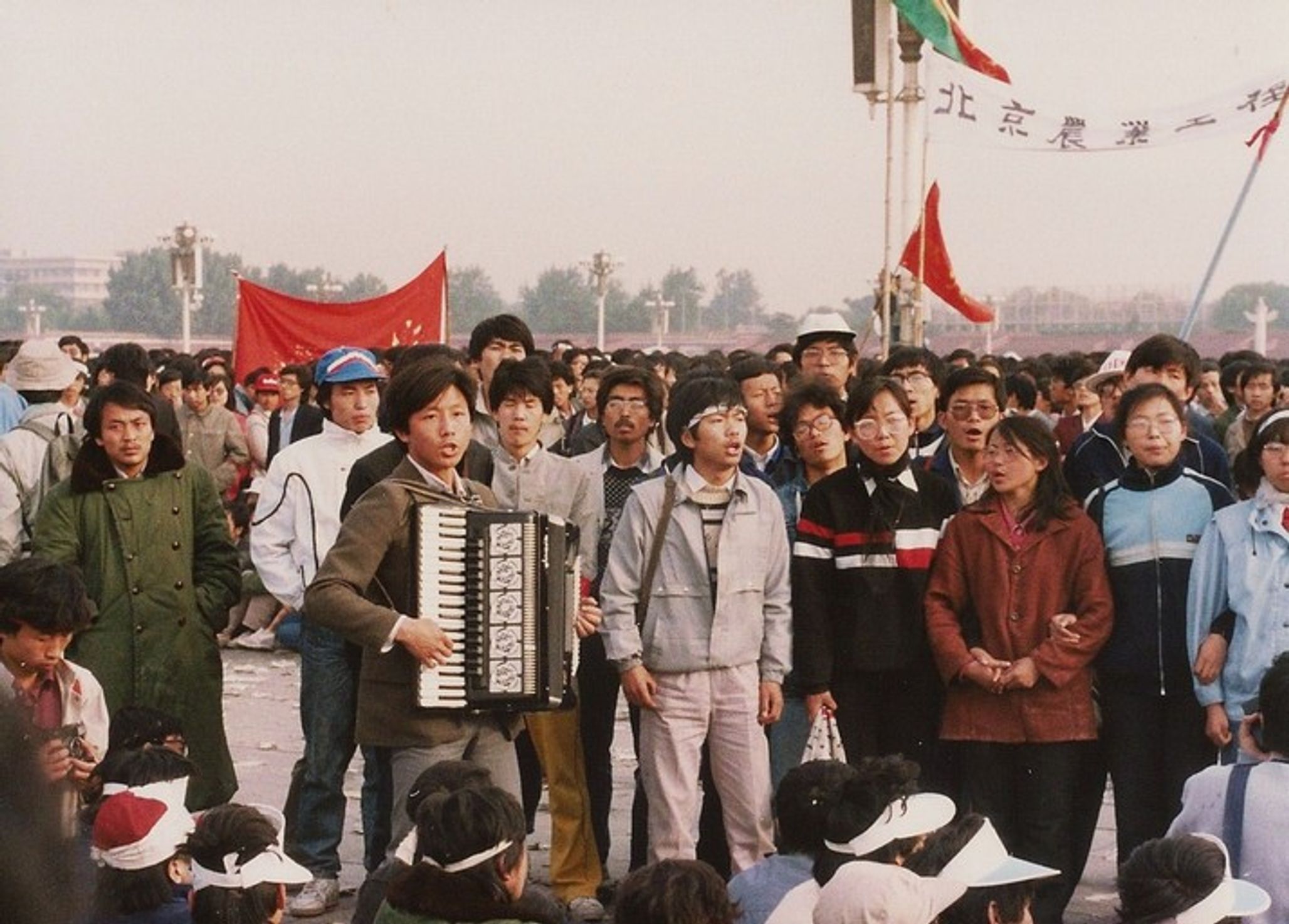

Visit our ‘Viewfinder’ to see more of Terril Yue Jones’s photos of 1989 in China →
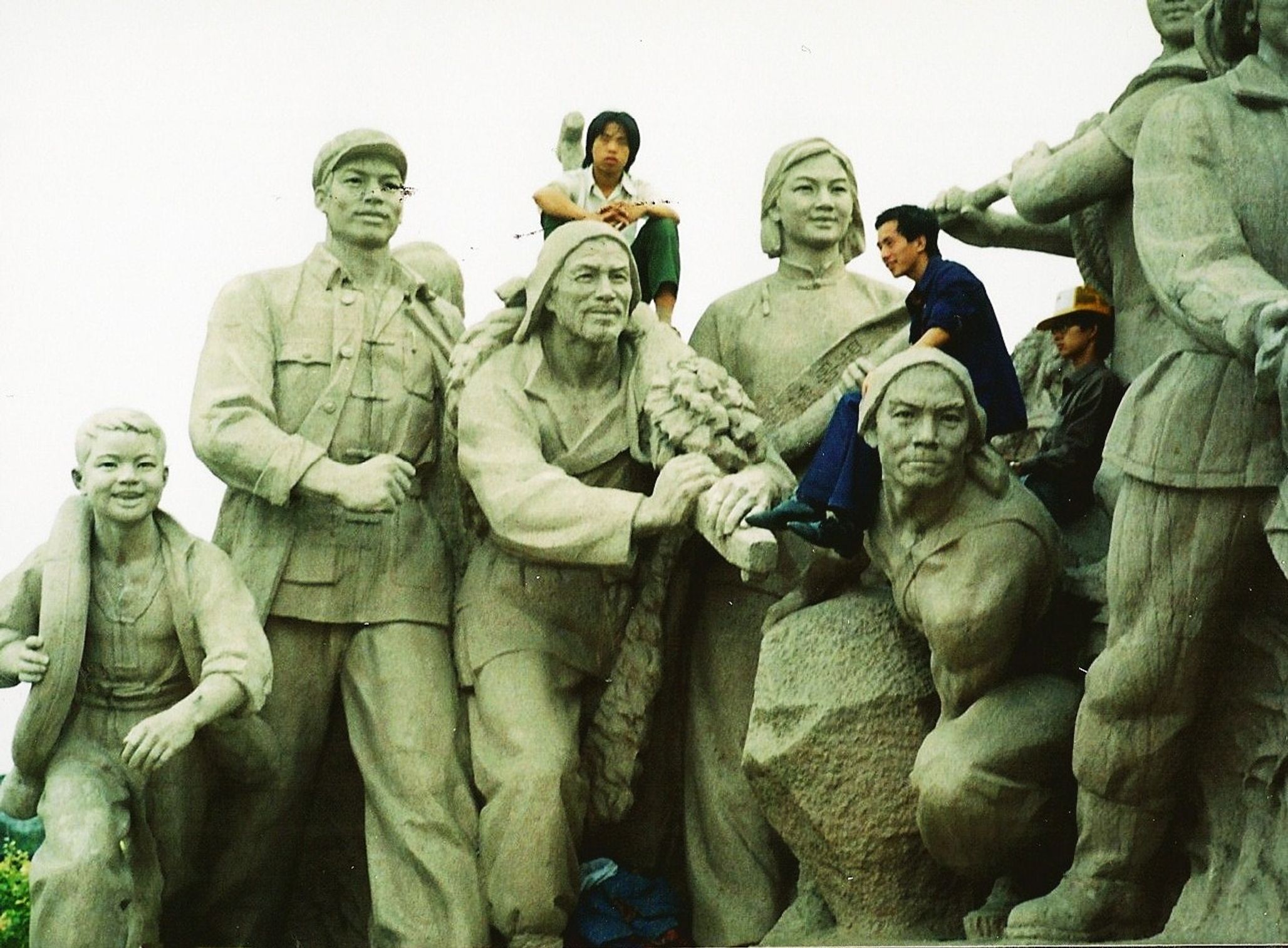
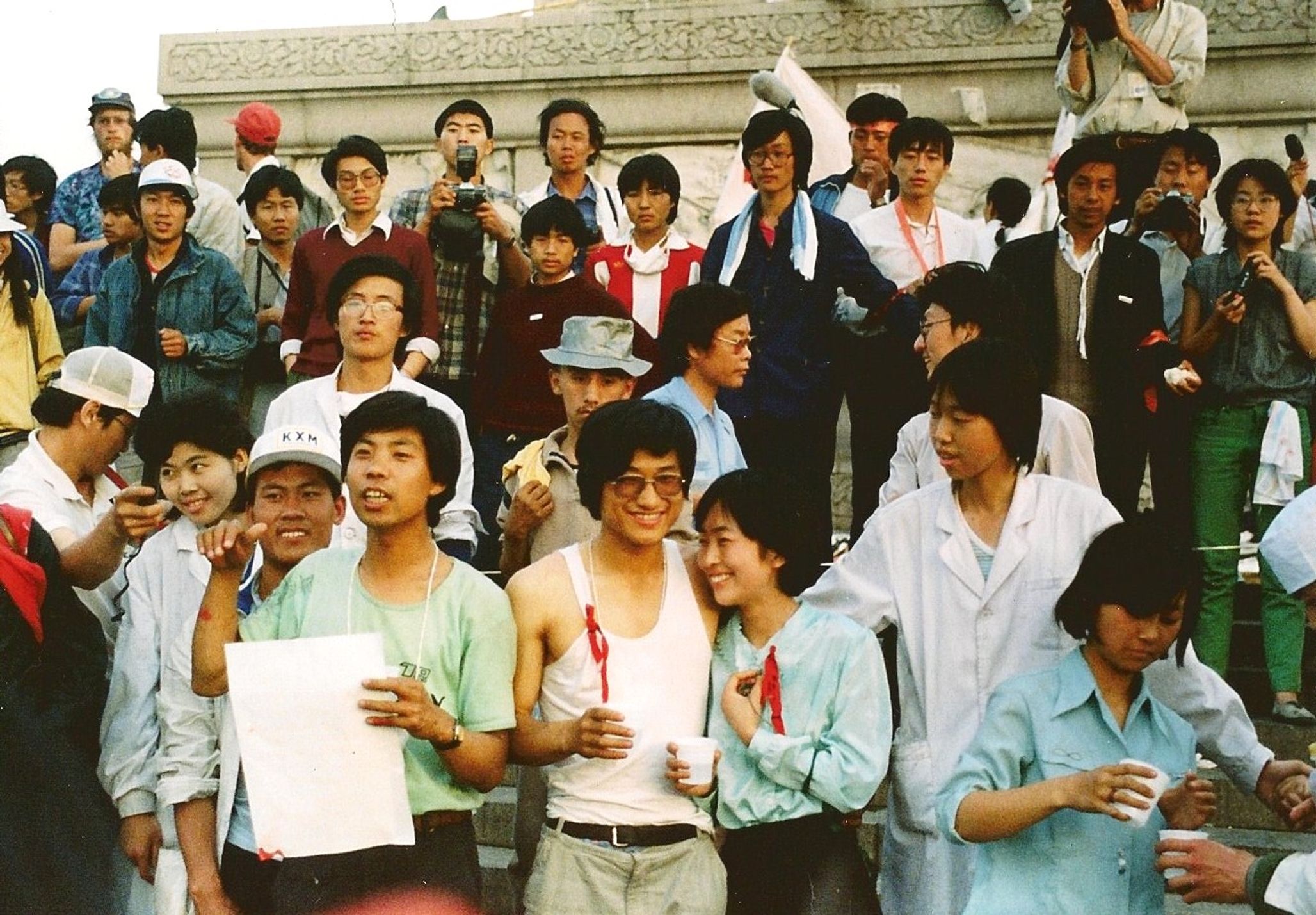
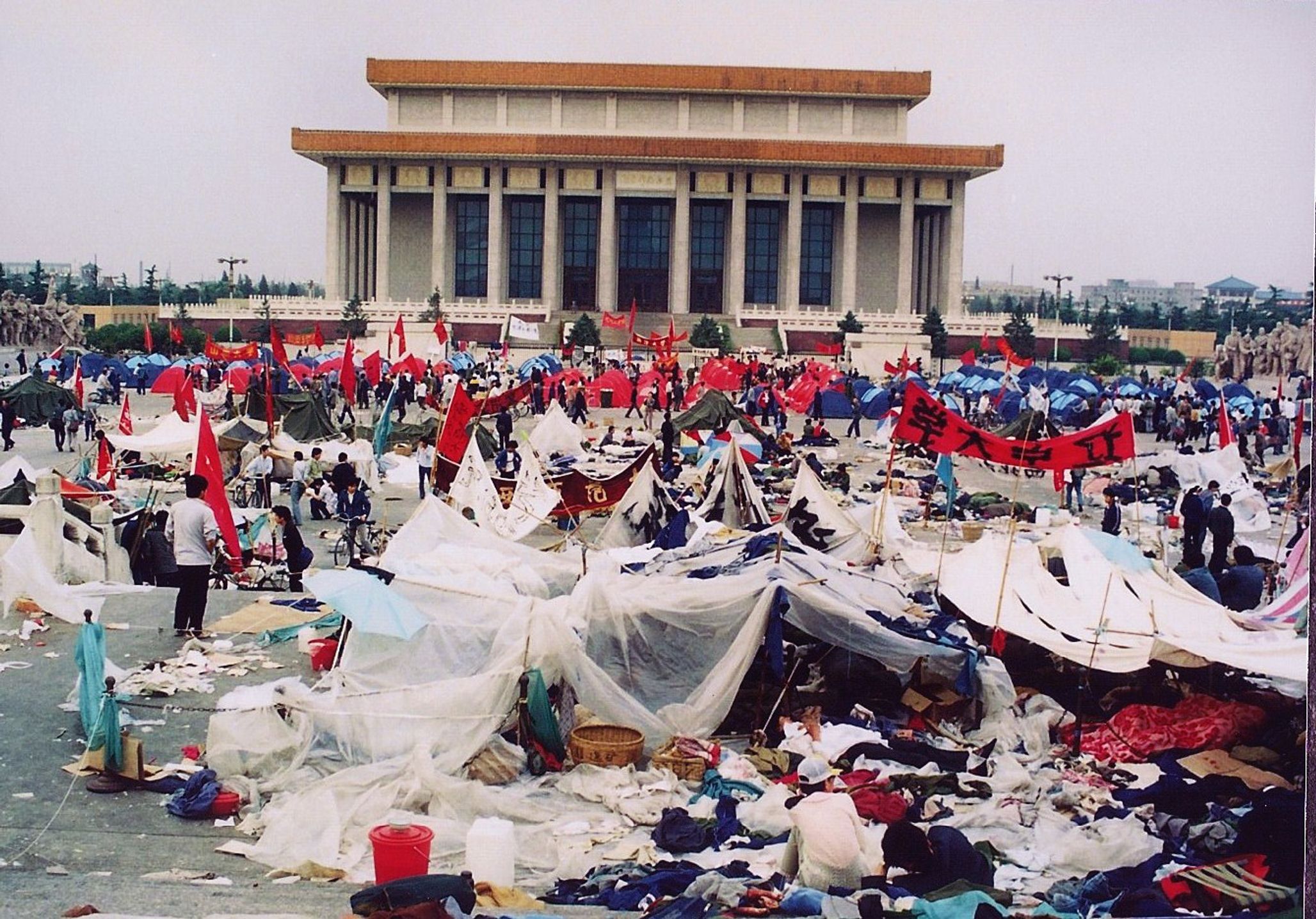
As in weeks earlier, the student movement faltered as protesters tired of the increasingly squalid conditions on T2. In late May, there were only an estimated 10,000 students on the Square, down from 300,000 or more.
On May 29, nine days after martial law was declared, students from the Central Academy of Fine Arts executed a masterful coup; piece by piece, these students brought the statue of the “Goddess of Democracy” to the Square, assembling it such that it directly stared down the portrait of Mao Zedong on the Gate of Heavenly Peace.
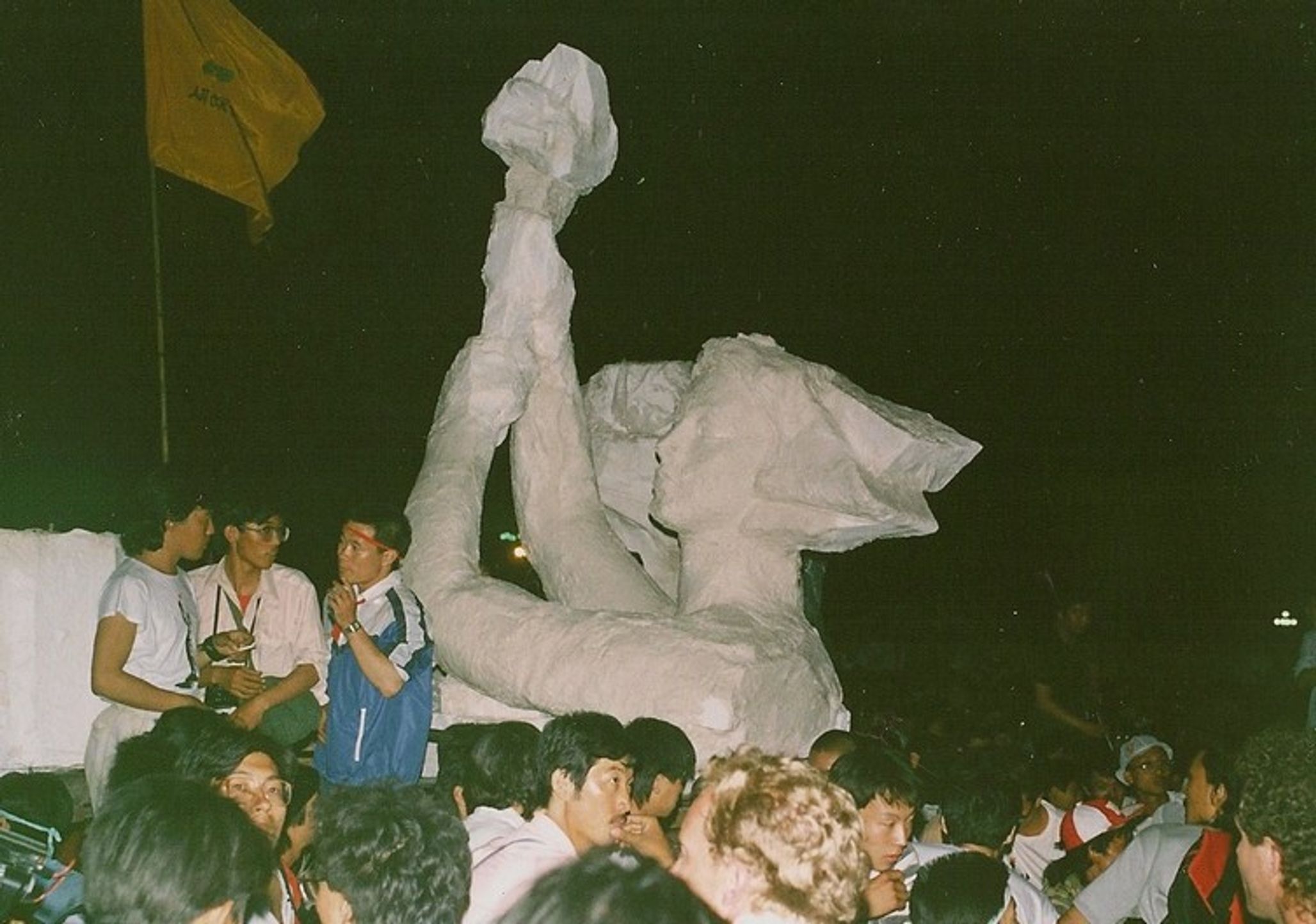
Piece by piece, students built a statue of the “Goddess of Democracy” in Tiananmen Square, constructing it directly across from the iconic portrait of Chairman Mao
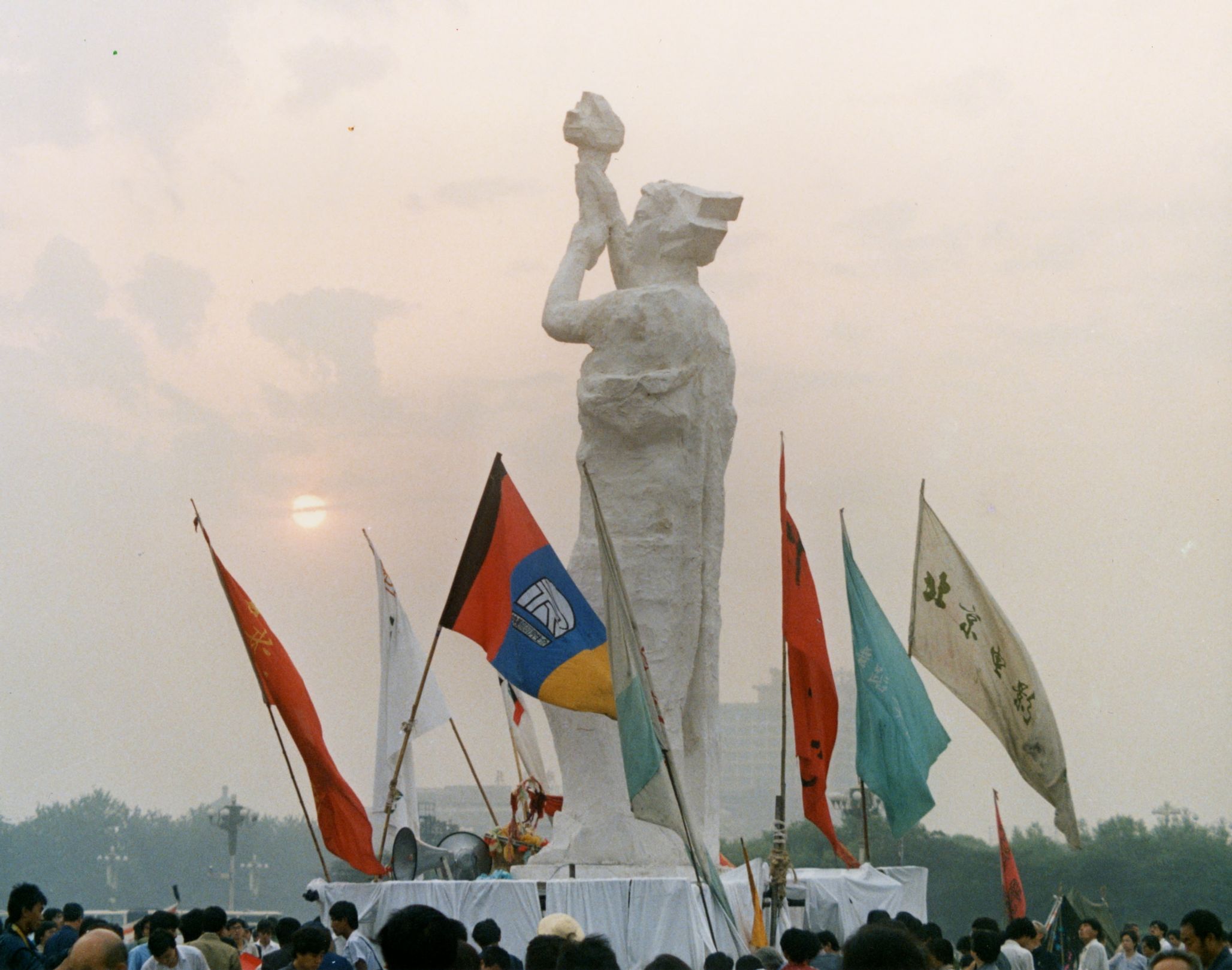
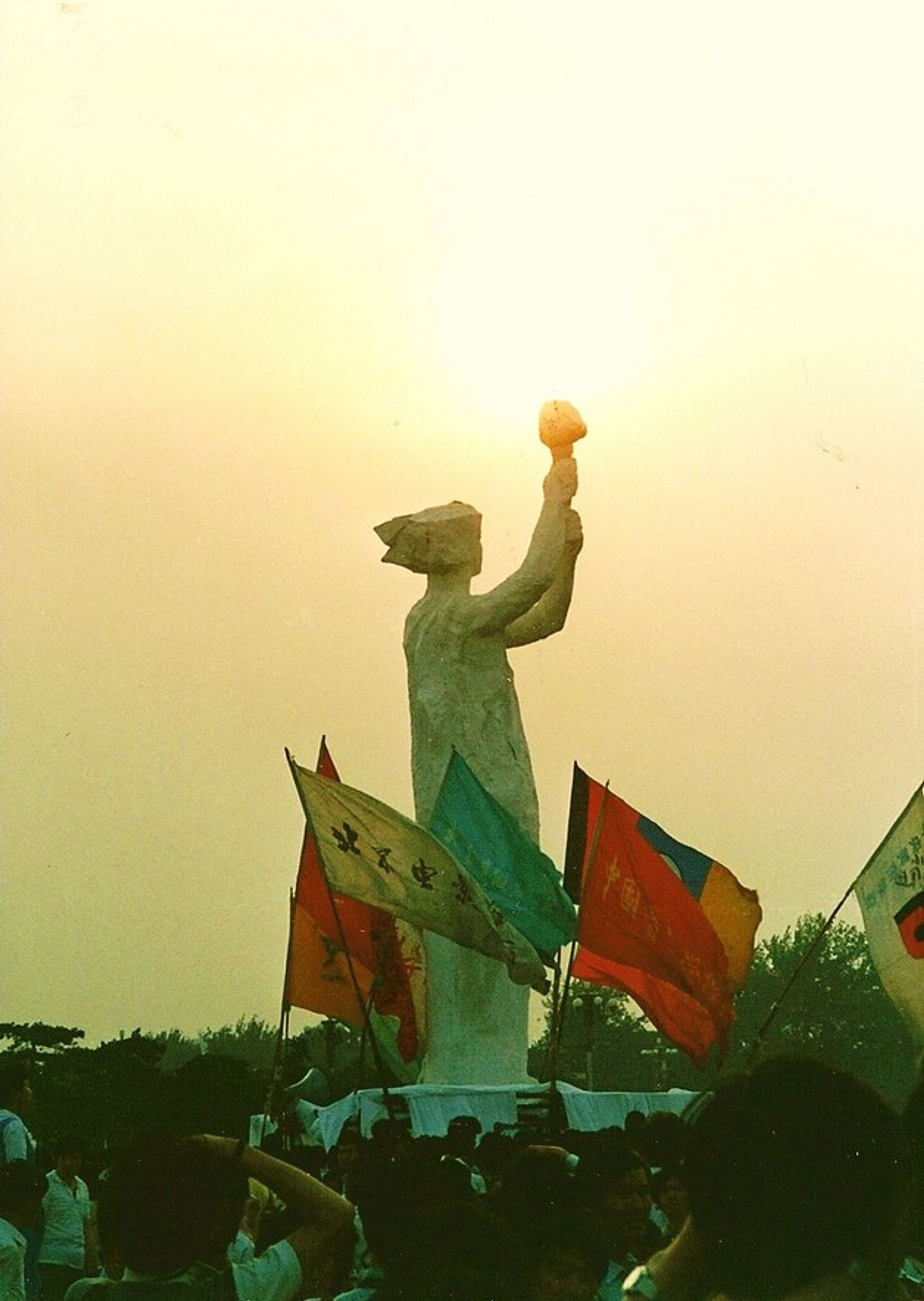
The move brought huge throngs back to Tiananmen and energized the flagging movement. But clashes with the police had been breaking out around town, and there was a palpable sense that the government had had enough and would call in whatever force was necessary to bring an end to the humiliating situation.
The tension in the air seemed to grow thicker along with renewed calls for protesters to persevere. On June 2, four intellectuals started their own hunger strike at the Heroes’ Monument, including Liu Xiaobo, a lecturer at Beijing Normal University who later was awarded the 2010 Nobel Peace Prize for his pro-freedom activism (and who is currently serving an 11-year prison sentence handed down in 2009 for “inciting subversion”).
This was the proverbial final straw. An attempt to send thousands of soldiers jogging to Tiananmen Square the night of June 2 failed miserably, as citizens massed to protect T2 and turned back the youthful, gawky and unarmed troops.

The following night, the PLA shot its way into Tiananmen, killing scores of people — mostly workers and citizens out to kan renao. I was out filming video, but when I went back to my room at the Beijng Hotel to use the phone to file radio reports, I was accosted in the lobby by a group of police led by a Public Security Bureau officer whose given name I still remember: “Jianhua,” or “build China.” My two-hour videotape, full of recordings, was confiscated.
I’ve long wondered if Jianhua was his real name. Chinese authorities hint subtly at blame and heroics by the names of people involved. Three PLA soldiers, said to have been killed and then burned or hanged by enraged mobs, were hailed as martyrs, and makeshift memorials were immediately set up where they died. Their names, according to government-controlled media, were Li Guorui, Liu Guogeng and Cui Guozheng. “Guo,” the middle character in the names of all three, means “country.”
Returning from the Square, I was accosted by a group of police led by an officer whose name I still remember: “Jianhua,” or “build China.” I've often wondered if that was actually his name.

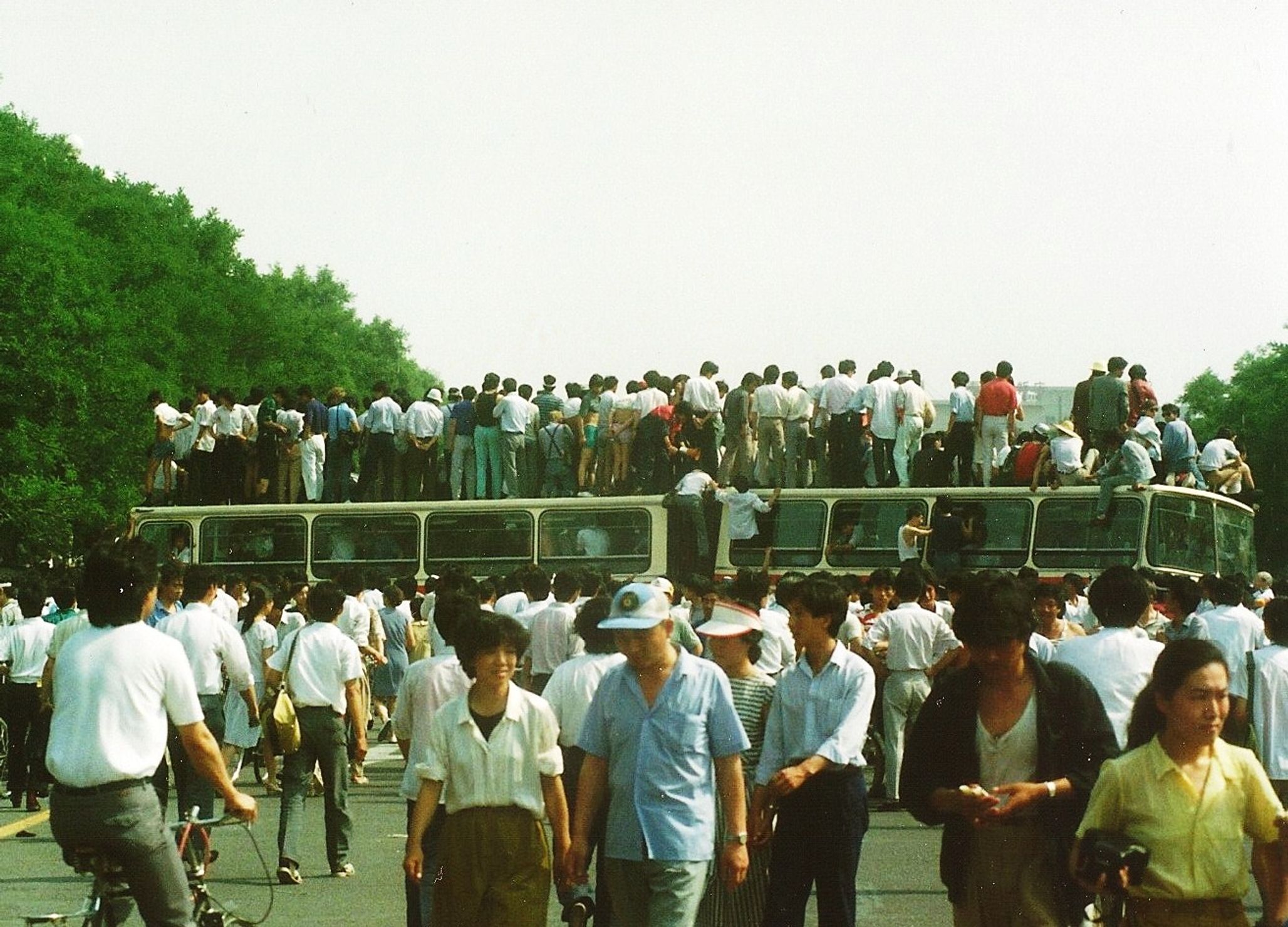
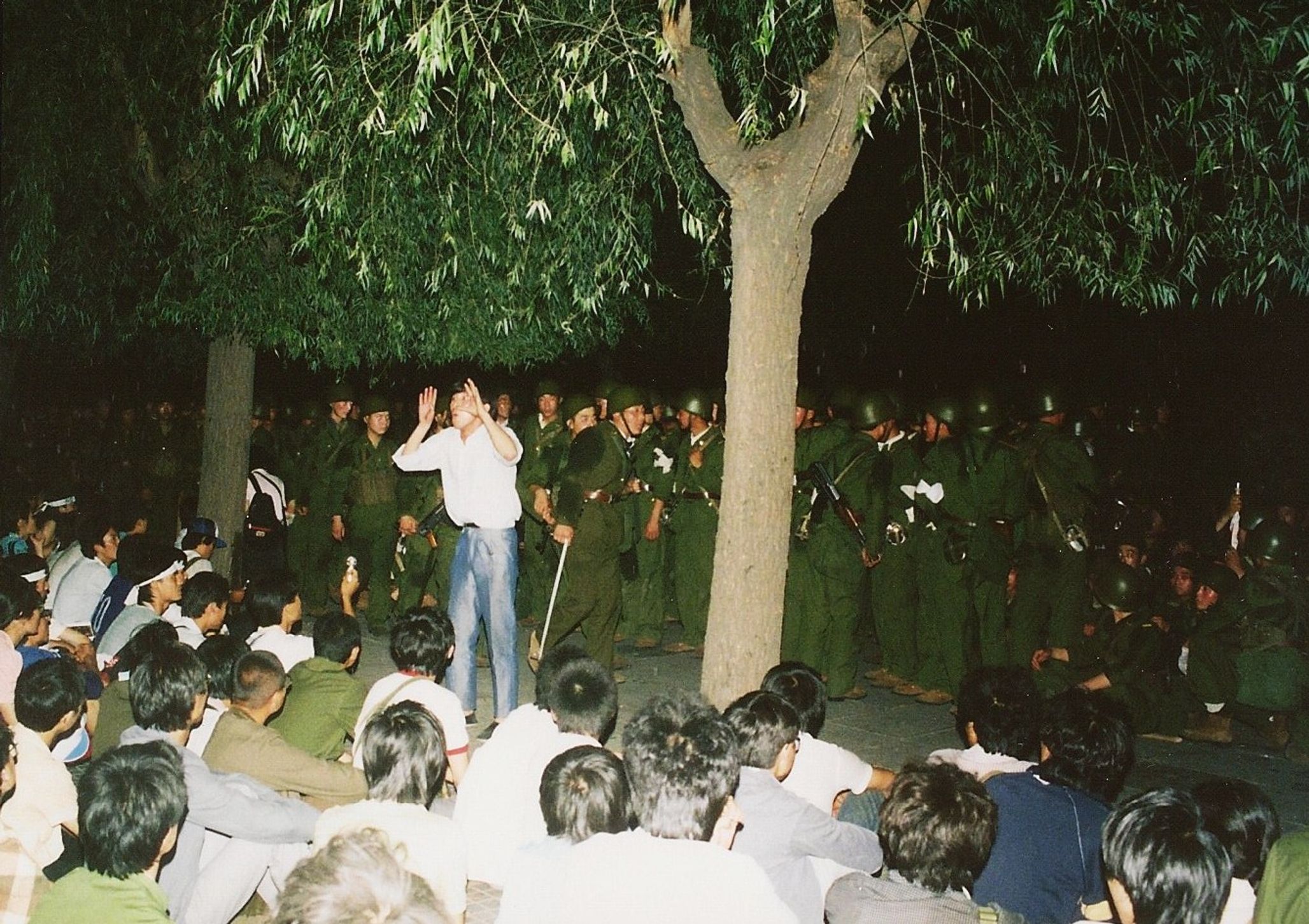
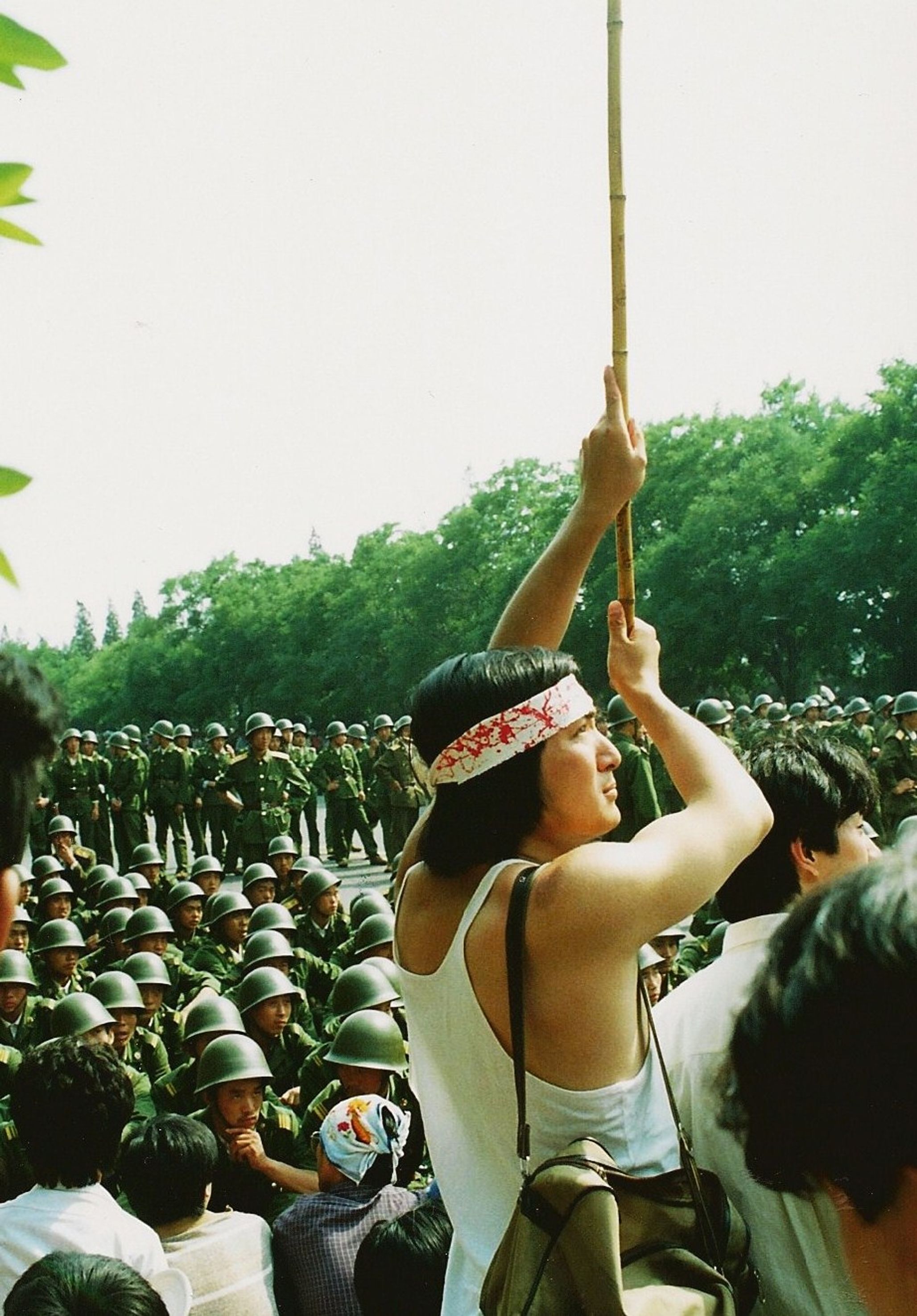

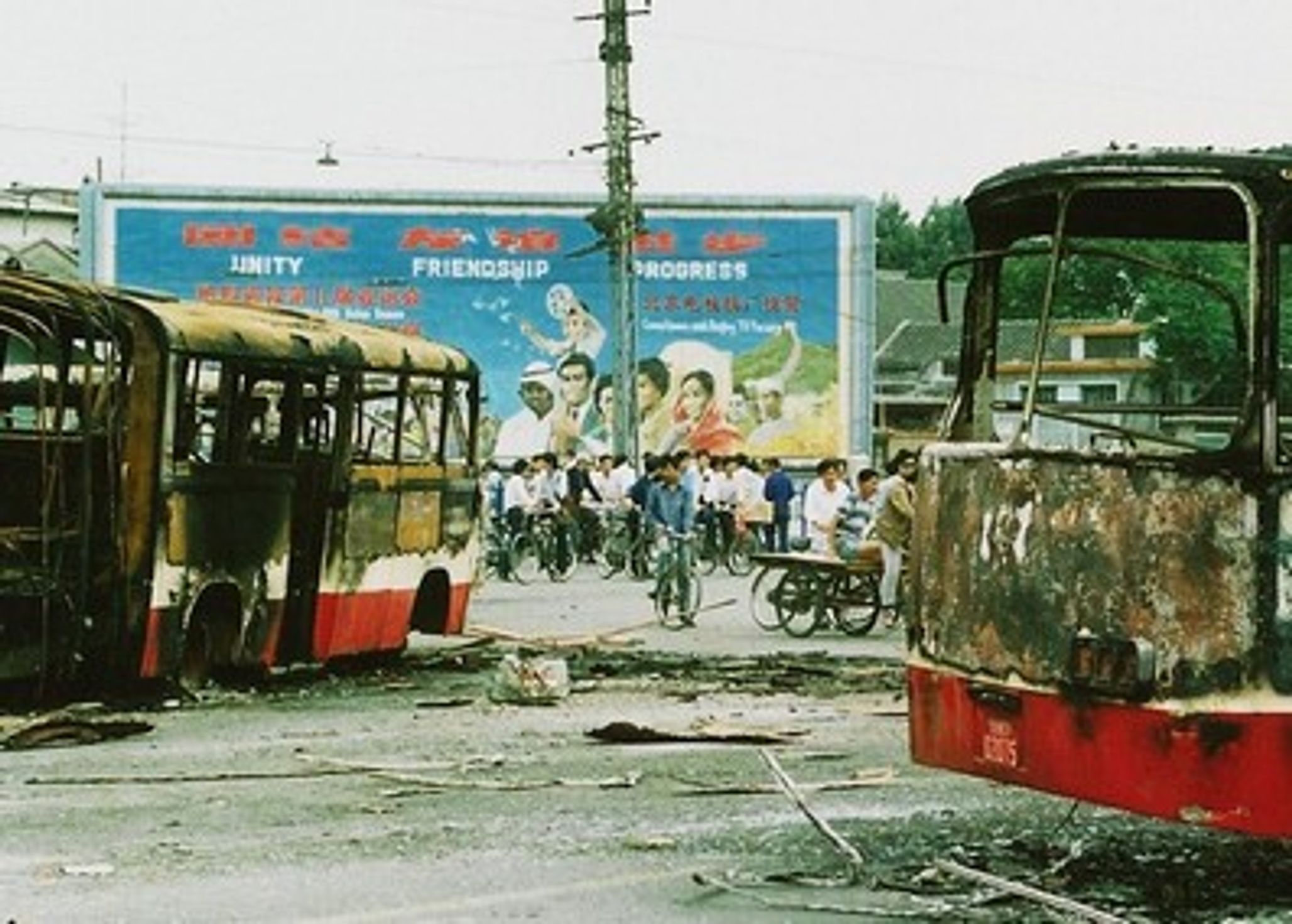


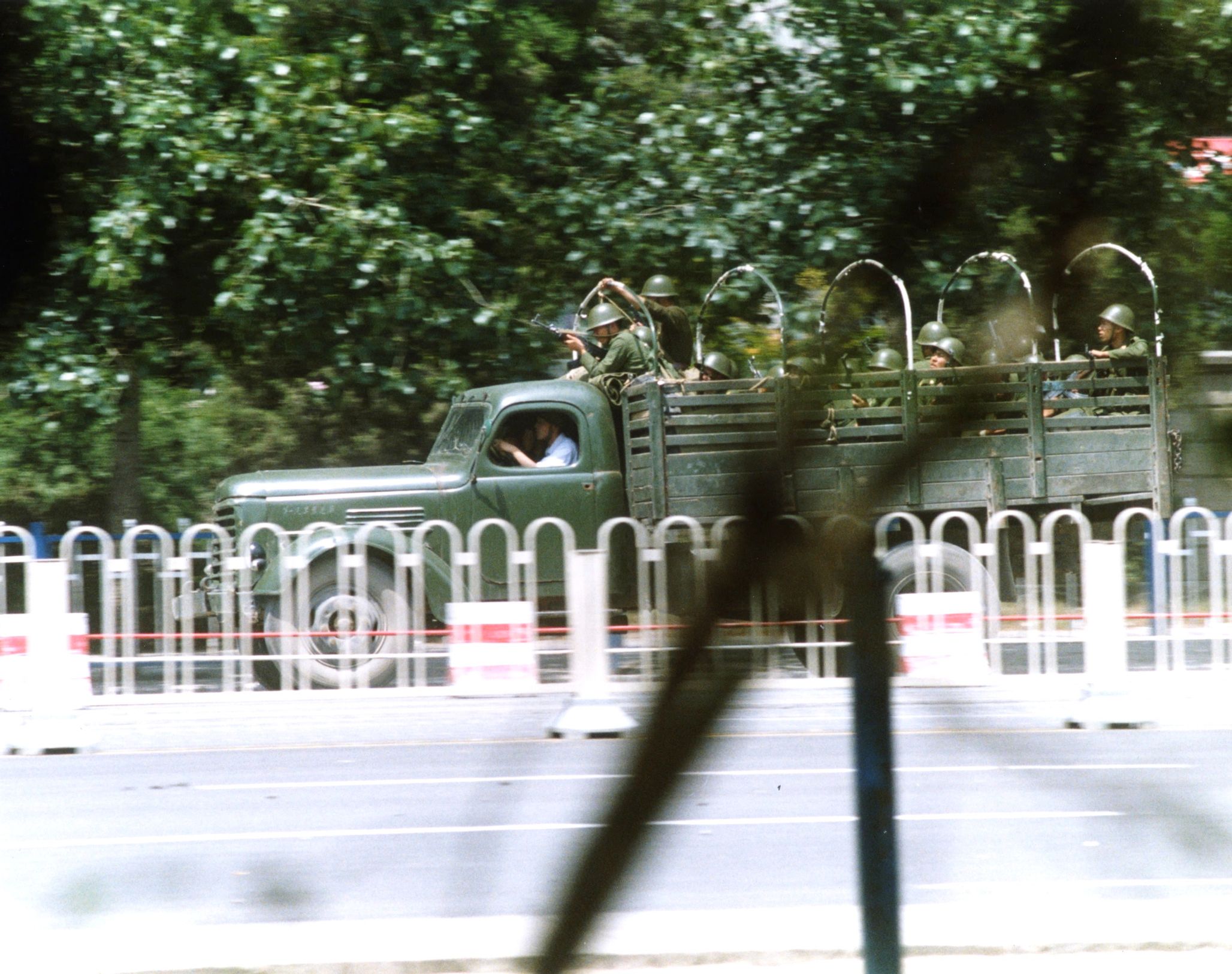
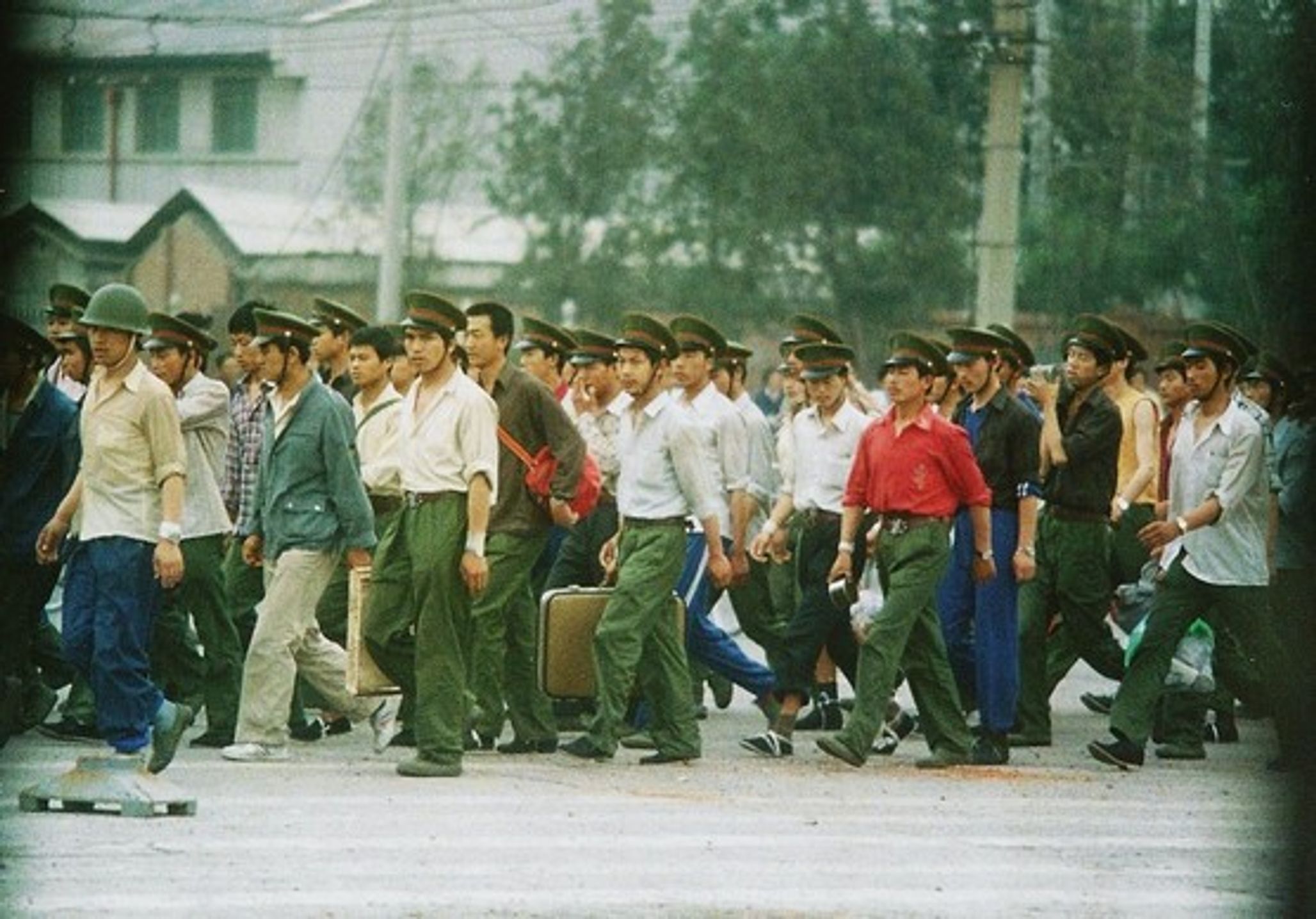

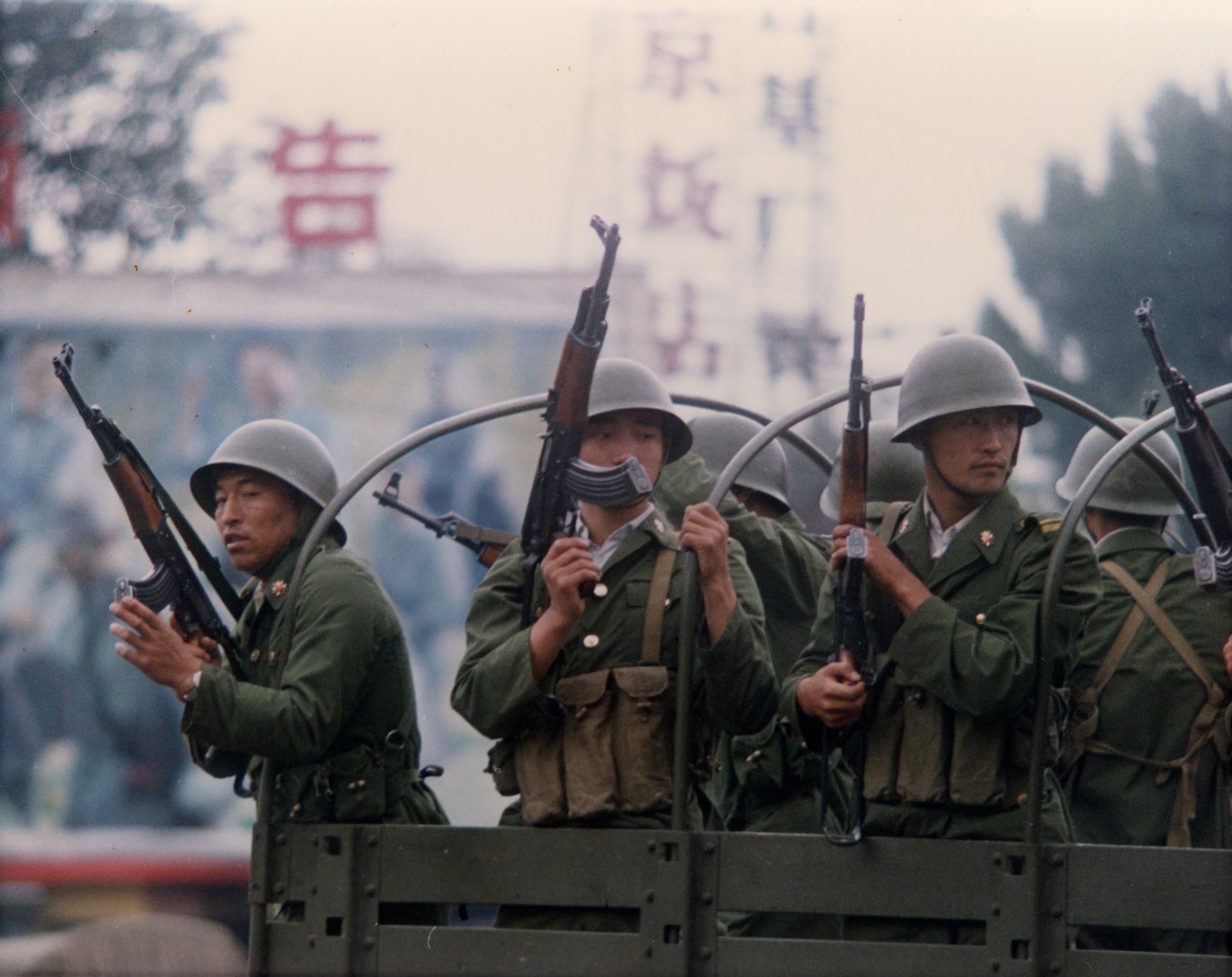
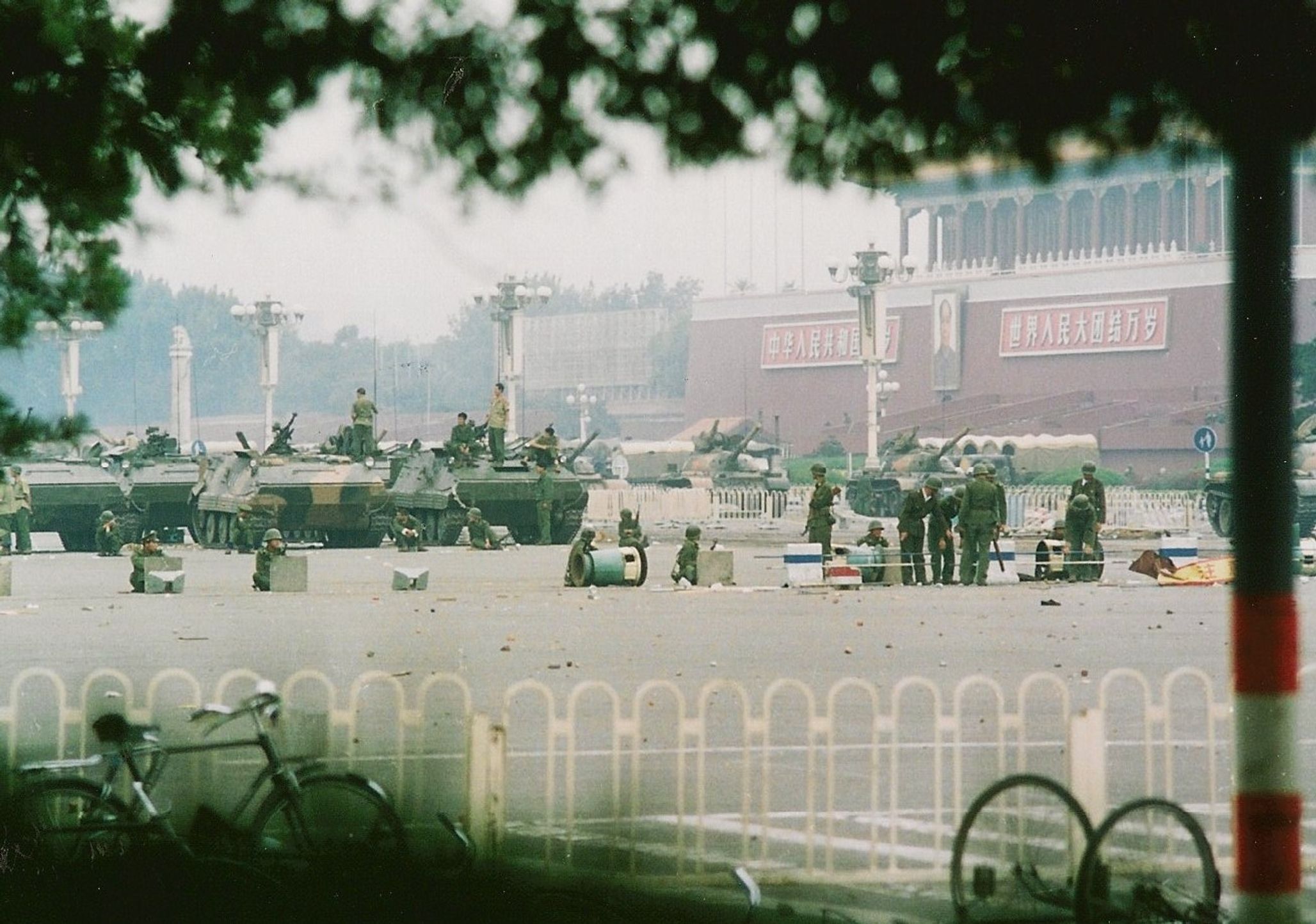
Visit our ‘Viewfinder’ to see more of Terril Yue Jones’s photos of 1989 in China →
The legacy of what happened in 1989 has persistently resonated around the world, and the date is always marked by small protests at Chinese Embassies and consulates. In Hong Kong, the former British colony returned to China in 1997, the turnout is consistently huge.
But in the years since then, China has gone from a catch-up developing country to the economy we know today: the world’s biggest consumer of fill-in-the-blank — copper, cement, pork, soy beans. It’s the biggest holder of U.S. debt; the world’s largest market for mobile phones, the Internet, automobiles, and so on.
News items about this renewed China have never stopped making my jaw drop. In my first month after arriving for my assignment in Beijing with Reuters in 2010, I read on Xinhua that Beijing, one single city, was putting more than 2,700 new cars on the road per day — around 80,000 new vehicles on the road every month. (The traffic congestion and notoriously noxious pollution caused the city to limit new car registrations to 20,000 a month from 2011.) I read that Beijing was planning to construct, from the ground up, three satellite cities around the capital, ranging from 350,000 to 1.2 million inhabitants, to combat congestion in the capital. Say again? Build a city of a million people out of thin air to handle overflow? (If anyone can do it, China can.)
I once interviewed the visiting CEO of a British firm that works with display screens at airports. He said his company’s market in China was 95 airports — equivalent to the number of opportunities he had in the rest of the world combined.
China has become a country whose entrepreneurs can erect a 30-story hotel in two weeks (I stayed there for two nights on the 17th floor). Its business travelers have become such an economic force that InterContinental Hotels Group launched a Chinese-branded hotel chain, HUALUXE, to accommodate those travelers worldwide. And as China’s leaders gain economic clout, they feel it is the nation’s destiny to boost its military strength. Starting in late 2011, in the space of a year, I wrote about China test-flying stealth fighter jets, launching its first aircraft carrier (albeit one purchased used from Ukraine), unveiling its first home-grown attack helicopter, and introducing a new generation of drone aircraft.
Concurrently, China is flexing its military muscle beyond its traditional shores, loudly laying claim to tiny specks of islands and shoals in the East and South China Seas, leading to heated pronouncements and chilled relations. In such volatile regions an inadvertent confrontation — say, a stray flare gun shot or two ships bumping — could set off a potentially disastrous conflict.
But the spat with Japan in particular offers China the opportunity to channel public frustrations and anger away from high-risk domestic issues such as corruption, nepotism, air and water pollution, toxic food, land grabs, sky-high apartment prices, the ever-increasing wealth gap, and so on — issues that might spark another Tiananmen-like protest movement that could spread like wildfire now that China is in the Internet Age.
Anti-Japanese fervor, tacitly enabled by the Chinese government, saw crowds of Chinese marching in circles in front of the Japanese Embassy in Beijing in September 2012, taking turns to stop and lob eggs and water bottles at the Japanese mission. The marchers, shouting slogans and waving red, white and black banners, were eerily reminiscent of the demonstrators of 1989. Chinese riot police kept careful watch that things would not veer out of hand. The next day, police did what you would have expected them to do in the first place: cordon off the street.
This is what concerns China’s leadership the most: if disaffection unites any group of Chinese by class, region, income, victimization, ethnicity or other ties, there could be another tidal wave of protests that could threaten the stability, even the existence, of the Communist Party.
China’s leaders worry that if disaffection unites any group by class, region, income, ethnicity, or other ties, there could be protests that threaten the Communist Party’s reign
In February 2011, after the “Jasmine Revolution” in the Middle East, there were anonymous calls spread through websites for Chinese to hold their own Jasmine-like protests by simply taking Sunday walks in shopping districts in Beijing, Shanghai and other cities, and blend in with other shoppers. With no further encouragement than that, Chinese security forces were out in force in the Wangfujing and Xidan districts of Beijing, even building fake construction zones to block pedestrians. The result was an almost comical crowd scene dominated by police, foreign journalists, and security personnel (disguised as street cleaners with brooms). Several reporters were roughed up and had photos confiscated or deleted, but there were no identifiable “protesters” besides a few vague detentions in Shanghai. I was the on-duty desk editor on that story and my name was attached to it.
These incidents underscore how paranoid China’s leaders can be about the public mobilizing in protest, and why they expend so much manpower to censor the Internet. Typically, Chinese authorities ban online searches with terms seen as inflammatory. After “June 4th” was banned, Internet users responded with a workaround term: “May 35th.” A year ago this week, Chinese censors even banned searches for the word “today.” There is no remembrance in the press, and writers and activists who want to get messages out can only do so overseas or through foreign media.
After “June 4th” was banned as an online search term, Internet users responded with a workaround term: “May 35th.”
Just the word getting out about unrest makes Chinese authorities extremely nervous. During the week after the Jasmine non-protests in Beijing, a plainclothes female police officer and two patrolmen visited my family while I was at work across town, asking politely but humorlessly for our resident registrations. My wife went to look for our passports and put me on the phone with our daughter, then 10 years old. “Daddy,” she asked, “why are there people in uniform here?”
While there were no threats and we were told this was being done with everyone in the building (it wasn’t; only foreign journalists were visited), the message was clear: we don’t like your reporting, and we know where you live. The low-level intimidation brought home to me the helplessness and despair ordinary Chinese citizens face with similar visits, and the genuine courage that Chinese dissidents and activists muster when they speak out.
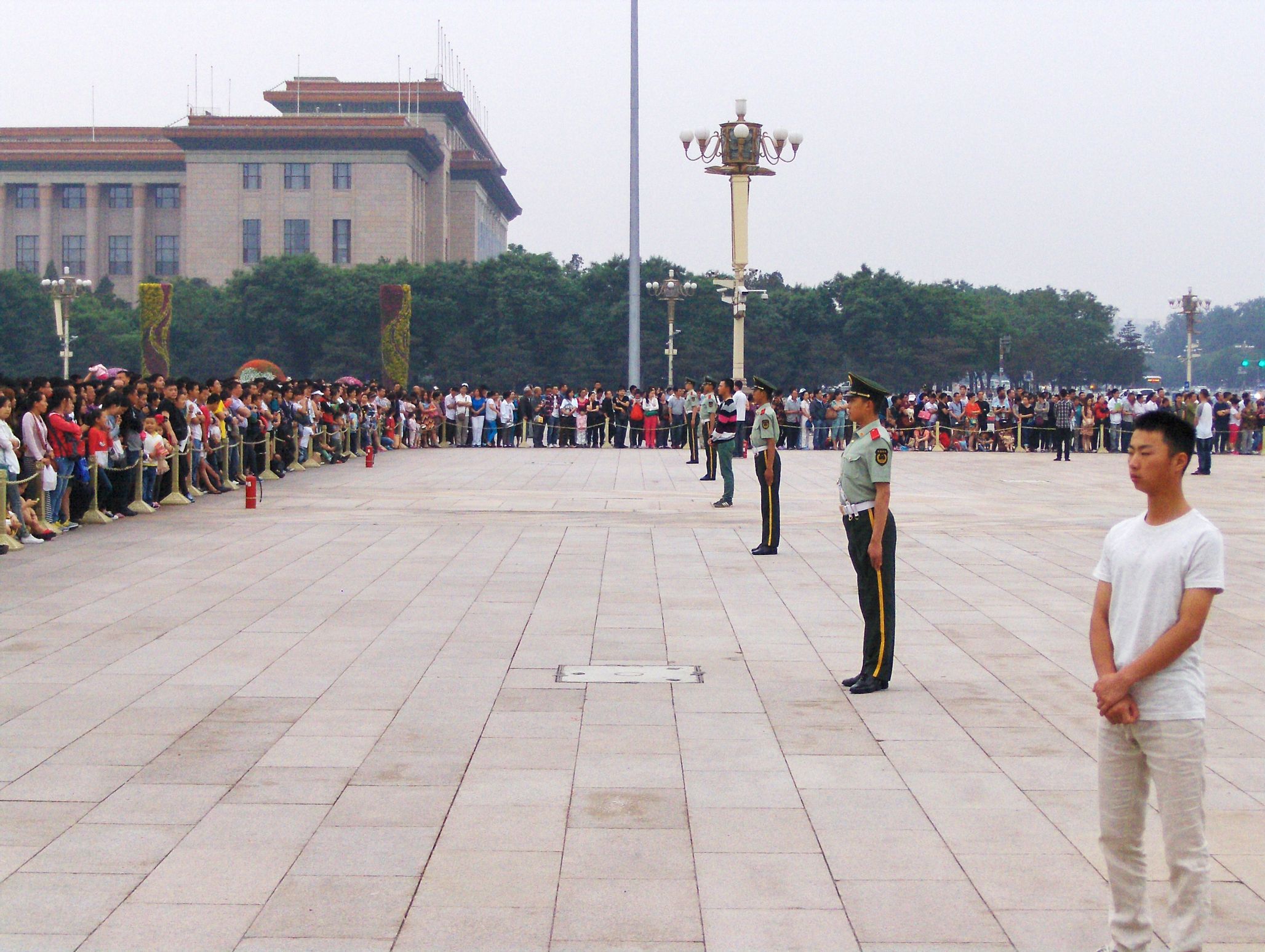
One who speaks out is Zhang Xianling, a co-founder of the group Tiananmen Mothers — parents whose children were killed that night in 1989. “If the government is sensible, next year is the 25th anniversary and they could designate a spot where we could march,” Zhang, 76 at the time, told me a year ago. She and families of other Tiananmen victims are closely watched, and kept from gathering together at Wan’an Cemetery, where several of their children are buried. Zhang’s son was shot across the street from the Great Hall of the People, where he went to kan renao and take pictures. He bled to death. Although it’s a sad anniversary, “if you want to commemorate it, you should be able to commemorate it," Zhang told me. "That would be an enlightened government."
Such permission is unlikely anytime soon. The “6-4 incident” is mentioned only in passing in reference material as a counter-revolutionary conspiracy. “I never heard anything about June 4,” a friend in her late 20s told me by text from China this week. “All we learned in school was what Japan did to us,” she said, referring to the Chinese preoccupation about being wronged by Japan in the 1930s and 1940s. “I’ve never learned anything bad about China, ever … in my whole life.”
Increasing numbers of these empowered Chinese know little or nothing about 1989.
College students in the U.S. from China, seeing video I took in 1989, are flabbergasted. “Just … wow!” said one last week, who was floored that students her own age would actually care about the direction of China, and dare to criticize Communist Party leaders by name (especially Deng Xiaoping). “All people care about now is making money and buying an apartment,” she said. I heard the same sentiment many, many times from locals in China.
This week I spoke by phone with another friend in China, a young person of 25 who was born in 1989. “We can’t talk about that!” this friend said about this week’s anniversary with a laugh. “But it’s important to discuss because the government of China is not confident, and doesn’t like discussing things openly such as 6-4,” said the friend. “Making it so mysterious means no one can assess it. It shows a lack of confidence by the world’s second-largest economy.”
Attempts to quell foreign media remain common. In recent weeks, many foreign journalists have been called in “to have tea” (a form of mild warning) with various departments, and warned not to report on “sensitive topics” at “sensitive times.”
Journalists from one French broadcaster, who were showing the well-known image of the Man-versus-Tank encounter to random Chinese in a busy shopping district, were detained by public security for six hours. Asked which Chinese law had been broken, the journalist was told, “It’s not a matter of law; it’s a matter of culture. The culture is above the law.”
With a quarter-century of hindsight, some have argued that the citizens’ demands of 1989 were largely met. Chinese today are vastly more wealthy, both in money and in opportunities. Tens of thousands of Chinese study abroad every year. Many start their own businesses, become extremely rich, travel abroad, and many have achieved what their parents never could in their youth: owning an apartment.
This has no doubt helped keep the Communist Party in power. Combined with an inexorable power to quell dissent, censor the Internet and control the media, the Party has an understood contract with its people: We’ll let you prosper; you let us stay in power. During a visit to the Beijing Olympics in the summer of 2008, I struck up a conversation in Tiananmen Square with a company worker from Hunan province. He said with satisfaction that many people at his company owned cars. I asked him how he felt about what had happened 19 years earlier where we were standing. “It’s in the past,” he said. "If I don't steal, swindle or kill, no one will bother me.”
It’s that kind of disinterested focus on self that Chinese authorities have very effectively fostered in the years since the uprising at Tiananmen Square. Yes, the economic and social improvements for which workers, teachers and other citizens agitated in 1989 — from increased salaries and home ownership to social and economic rights — have largely been accomplished, giving rise to a massive middle class. But it’s those masses in the middle class and below who see the yawning wealth gap between themselves and China’s legions of millionaires.
And with the Communist Party bringing all its powers to bear to bury the story, increasing numbers of these empowered Chinese know little or nothing about the events of 25 years ago.
“This part of history needs to be deciphered,” said my friend born in 1989. “The Chinese government is being silent about it, but we need to talk about it. It shouldn’t look as though China is a monster. We should talk in an objective way.”
* * *
Terril Yue Jones is a longtime foreign and business correspondent who has lived in Asia for 16 years. He covered Japan, France, north Africa and the UN for 15 years with The Associated Press; Chinese business, politics, and policy for Reuters; was a founding editor of Forbes Global magazine and the Detroit-based auto correspondent for Forbes; and an automotive and Silicon Valley correspondent for the Los Angeles Times. Jones was a Knight-Wallace Fellow at University of Michigan and a Kiplinger Fellow at The Ohio State University.
